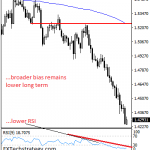
Europe sets the tone but will Asia follow…….
On Thursday, 10 March 2016, the European Central Bank (ECB) announced a series of 6 significant policy decisions aimed at driving growth, raising production and stimulating overall economic activity. Among the most significant policy decisions was the increase of asset purchases by €20 billion per month, up from €60 billion per month. Additionally, the deposit rate has dropped by 10-basis points to -0.40%, and the interest-rate is down to 0.00%. The marginal lending rate is at 0.25%. The ECBs Governing Council has full control over the main refinancing operations, the rate on the deposit facility and the rate on the marginal lending facility – all of which have been highlighted above.

It is against this backdrop that the Bank of Japan will be facing all sorts of growing concerns. The main issue with the Japanese economy is that it has strict policy limits. This, despite the fact that the Governor of the Bank of Japan, Kuroda surprised markets with a -0.1% deposit rate cut. Analysts are expecting the Bank of Japan’s interest-rate decision to keep the status quo, despite the shock announcement from the last meeting. The broader issue with negative interest rates is that it is impossible to anticipate with any degree of certainty how well the markets will receive this type of economic shock. At best, negative rates are short-term measures designed to give the economy a jolt, but the long-term impact has not been proven. Both the Japanese yen and the Nikkei 225 index bamboozled market participants with the Nikkei 225 plunging and the yen strengthening. For what it’s worth, the Bank of Japan’s Kuroda has issued statements to the effect that no further rate cuts are likely at the Tuesday meeting. Even Japanese government officials have shunned the actions of the central bank as the populace in Japan grows increasingly wary of the impact of negative rates on savings.















Leave A Comment